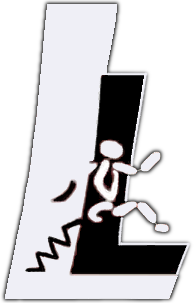Marco Hopper

Hopping can be understood as the same as running but without horizontal motion. A robot which aims to run needs to show hopping first. In human hopping a spring-like leg behaviour is found while the legs are not made of springs. Based on the reflex model it was shown that a positive force-feedback strategy, a kind of muscle reflex, generates a spring-like leg behaviour just without elastic components.
In this project we identify mechanisms required for stable hopping motion based on experiments with robots, and humans as well as templates. Herefore, we investigate muscle reflexes and preflexes at joint level but also global strategies, e.g. stiffness adjustment of the leg. With the Marco hopper we have the chance to clearly understand the requirements for real world hopping motions in the case of absent elasticity. In a robot it is necessary to implement for instance energy and impact management. These important aspects are focus of this project.
Involved People: Sten Grimmer, Karl Kalveram, Daniel Häufle, André Seyfarth
Previous People: Hartmut Geyer, Zully Ritter
Subjects

Marco is a robot testbed capable of investigating conditions which lead to stable real world hopping. Investigations on Marco focus on the energy management, spring-like leg behavior and muscle-reflex simulations.

Experiments on human hopping are the basis for identifycations of local and global leg strategies necessary for stable hopping motion. Dynamics, kinematics as well as muscle activities were measured while the subject was shortly perturbed.

The reflex model is a leg having in minimum one muscle which is hardly activated by the brain. Using this model we investigate local muscle reflexes advantageous for hopping and running motion.
Marco Hopper
The MarcoHopper is designed for vertical jumping experiments. Based on sensory information the robot learns its own body dynamics in order to control its movements.
Simulations of Models
Publications
- Kalveram KT, Häufle D, Seyfarth A. From Hopping to Walking: How the Biped Jena-Walker can learn from the Single-Leg Marco-Hopper, Advances in Mobile Robotics: Proc. of 11th CLAWAR, Marques L, Almeida A, Tokhi MO, Virk GS (Eds.), World Scientific: 638-645, 2008.
- Häufle D. How hopping performance is affected by temporal and spatial discretization of muscle activation, Symposium on Recent Advances in Neuro-Robotics: Sensorimotor Control, July 20-22 Freiburg, Germany 2008.
- Kalveram KT. Cascaded Compliance in a Marco Hopping Robot, Dynamic Walking 2008, May 26-29 Delft, Netherlands, 2008.
- Häufle D. Stabilizing periodic hopping with Reflexes, Dynamic Walking 2008, May 26-29 Delft, Netherlands, 2008.
- Seyfarth A, Kalveram KT, Geyer H. Simulating muscle-reflex dynamics in a simple hopping robot. Autonome Mobile Systeme 2007, Berns K, Luksch T (Eds.), Springer: 294-300, 2007.
- Geyer H, Seyfarth A, Blickhan R. Positive force feedback in bouncing gaits? Proceedings of the Royal Society of London, Series B: Biological Sciences, 270(1529): 2173-2183, 2003.




